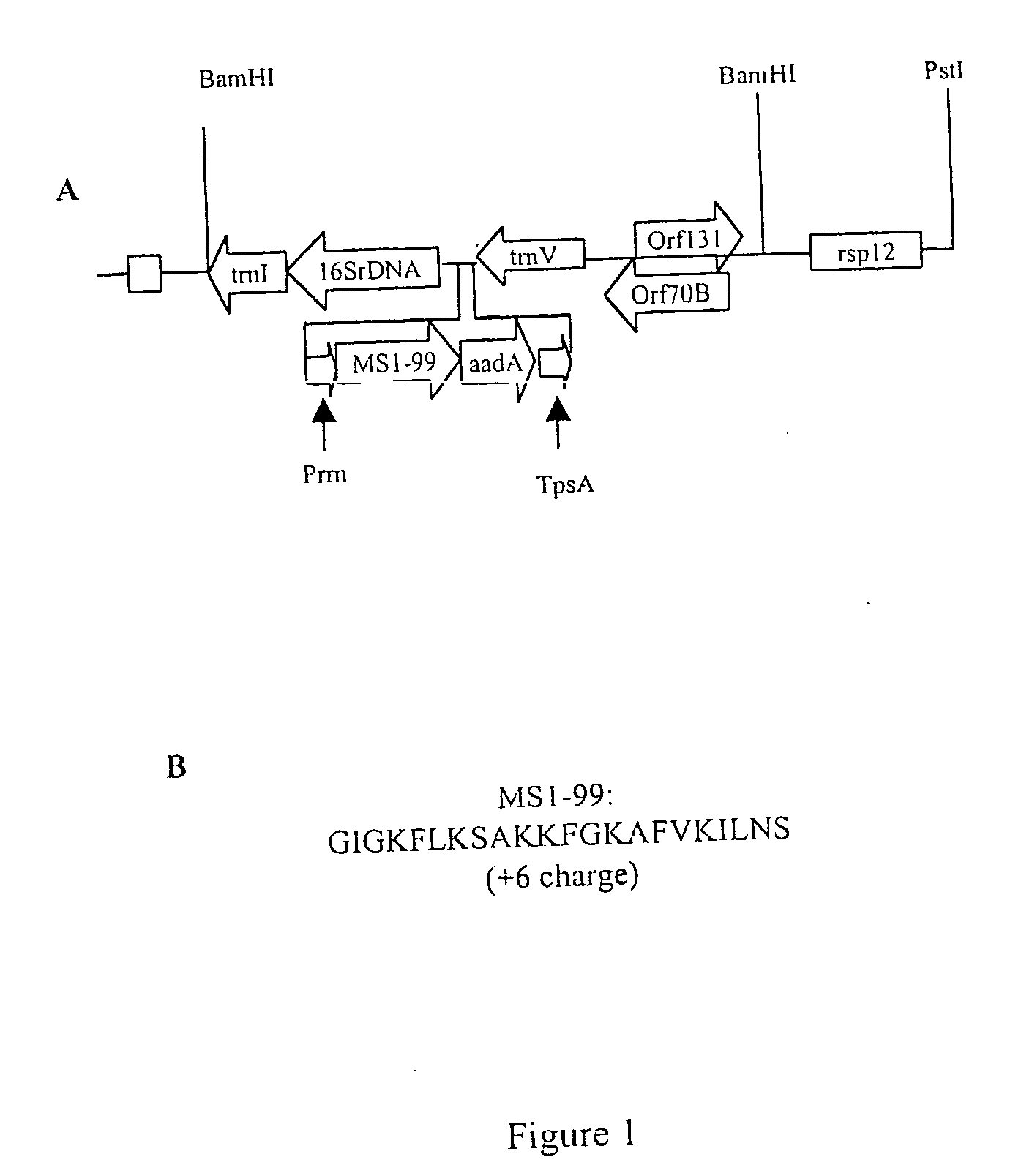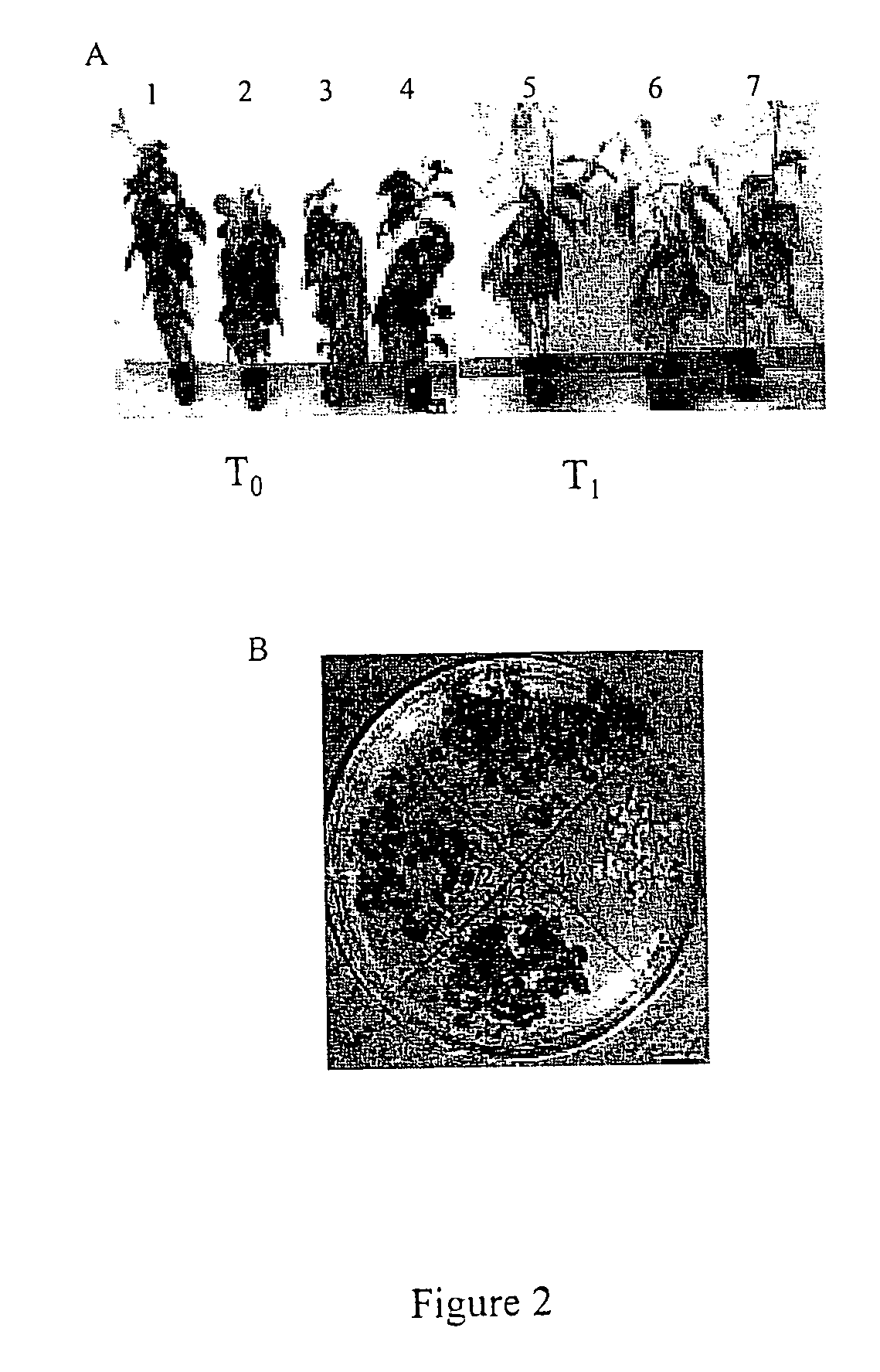Expression of an antimicrobial peptide via the plastid genome to control phytopathogenic bacteria
a technology of plastid genome and antimicrobial peptide, which is applied in the direction of plant genotype modification, biochemistry apparatus and processes, fermentation, etc., can solve the problems of limited application, adverse effect on global crop production, and unexplored agricultural use of magainin-type antimicrobial peptides
- Summary
- Abstract
- Description
- Claims
- Application Information
AI Technical Summary
Benefits of technology
Problems solved by technology
Method used
Image
Examples
Embodiment Construction
[0051] Plant transformation: For plant transformation, Nicotiana tabacum var. Petit Havana seeds were germinated on MSO media at 27.degree.0 C. with photoperiods of 16 hour light and 8 hour dark. Sterile leaves were bombarded using the Bio-Rad Helium driven PDS-1000 / He System. After bombardment, leaves were wrapped and kept in the dark for 48 hours. Leaves were then cut into 1 cm.sup.2 squares and placed on a petri dish containing RMOP media with 500 .mu.g / ml spectinomycin (first round of selection). Four to six weeks later, shoots were transferred to fresh media and antibiotic (second round of selection). Shoots that appeared during the second selection were transferred to bottles containing MSO and spectinomycin (500 .mu.g / ml). Plants were screened via PCR for transformation. Those that were PCR positive for the presence of the MSI-99 gene were transferred to pots and grown in chambers at 27.degree. C. with photoperiods of 16-hour light and 8-hour dark. After flowering, seeds were...
PUM
| Property | Measurement | Unit |
|---|---|---|
| MW | aaaaa | aaaaa |
| MW | aaaaa | aaaaa |
| MW | aaaaa | aaaaa |
Abstract
Description
Claims
Application Information
 Login to View More
Login to View More - R&D
- Intellectual Property
- Life Sciences
- Materials
- Tech Scout
- Unparalleled Data Quality
- Higher Quality Content
- 60% Fewer Hallucinations
Browse by: Latest US Patents, China's latest patents, Technical Efficacy Thesaurus, Application Domain, Technology Topic, Popular Technical Reports.
© 2025 PatSnap. All rights reserved.Legal|Privacy policy|Modern Slavery Act Transparency Statement|Sitemap|About US| Contact US: help@patsnap.com



